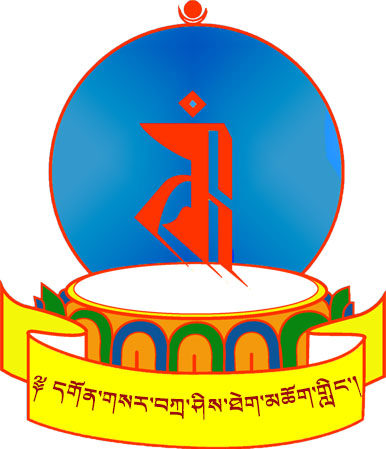Vajrayana Buddhism
The Tibetan Buddhist traditions, in addition to perceiving themselves to be the upholders of the Mahayana teachings, identify themselves also as followers of Vajrayana, the Diamond Vehicle. According to the Vajrayana, it is not adequate to simply cultivate the altruistic aspiration to seek enlightenment for the sake of all beings. Rather, a Bodhisattva must generate this altruistic aspiration to such a degree that he or she is no longer capable of tolerating the sight of other sentient beings suffering for even a single instant. The Vajrayana path is therefore a swift path that leads to the fulfillment of the basic aspiration of bodhichitta. The swiftness of the Vajrayana path does not arise because of a profound philosophical outlook, but because of the practice of most profound and sophisticated meditative methods.
Unlike other Buddhist teachings, in Vajrayana, various techniques and skilful means are presented that help transform the powerful resources of such negative emotions as attachment, anger, hostility, jealousy and so forth into factors that are conducive to the path to enlightenment. These methods consist of complex visualization practices, the cultivation of self-identification as a divinity, and transcendence of the bounds of ordinary perception and identity. These practices are key features of the heart of the Vajrayana meditation called deity-yoga, which is intimately connected with the visualization of the mandala. At the root of this deity-yoga practice is the union of blissful experience, such as that derived from the stimulation of the sexual impulse, with the single-pointed mind focused on the emptiness of all things. This is known as the “indivisible union of bliss and emptiness” and the state of Buddhahood is the perfection of this union. This profound meaning of the Vajrayana path is portrayed explicitly in the complex iconography of the Tibetan Buddhist world, within which mandalas occupy a central place. The Vajrayana meditation also includes sophisticated techniques involving the utilization of certain aspects of the human physiology such as the channels, chakras (energy centers) and the vital energies that flow within the channels. Corresponding to the level of emotions used, there are different levels of the Vajrayana path, the apex of which is Highest Yoga Tantra.
Guru-Yoga as the Axle of Practice
All four schools of Tibetan Buddhism agree on the centrality of Guru-yoga for successful Vajrayana practice. The heart of this meditation on the Guru (the spiritual mentor) is to cultivate a perspective that enables the practitioner to view the nature of his or her own mind as indivisible from that of the spiritual teacher and their meditation deity. In other words, the practitioner perceives the enlightened state of his mind as actually being the Guru and also the meditation deity. There is thus an identity among the object of meditation (the deity), the source of inspiration (the Guru), and the meditating mind (the practitioner’s own mind). Furthermore, the meditator also cultivates the pure vision of the spiritual mentor as the embodiment of all the Buddhas, Bodhisattvas and Meditation Deities of all directions. This meditation of Guru-yoga is often undertaken in the form of a visualization of a “merit-field”, which is illustrated in the form of a large tree of assembly. The image of the Lama Chöpa assembly tree is one such example.
This arrangement of the assembly tree provides a valuable glimpse into the basic topography of the Tibetan Buddhist path to enlightenment. The presence of the masters of the three lineages indicates the importance of having an uninterrupted transmission of the teachings through a succession of realized masters. The lineage of the “Profound View” pertains to the cultivation of insight into the ultimate nature of reality, namely emptiness, while the lineage of the “Expansive Practice” relates to the development and enhancement of compassion and the altruistic aspiration to attain enlightenment for the sake of all beings. Lastly, the “Experiential Lineage” evokes the mystical dimension of the path that is related to direct, spontaneous experience derived from the inspiration of realized masters. This, of course, refers to the Vajrayana path. Together these three lineages underline the importance of the union of wisdom and compassion on the basis of a deeply inspired meditative practice. This is the heart of the Tibetan Buddhist spiritual practice.
This essay was posted with the kind permission of Geshe Thubten Jinpa
